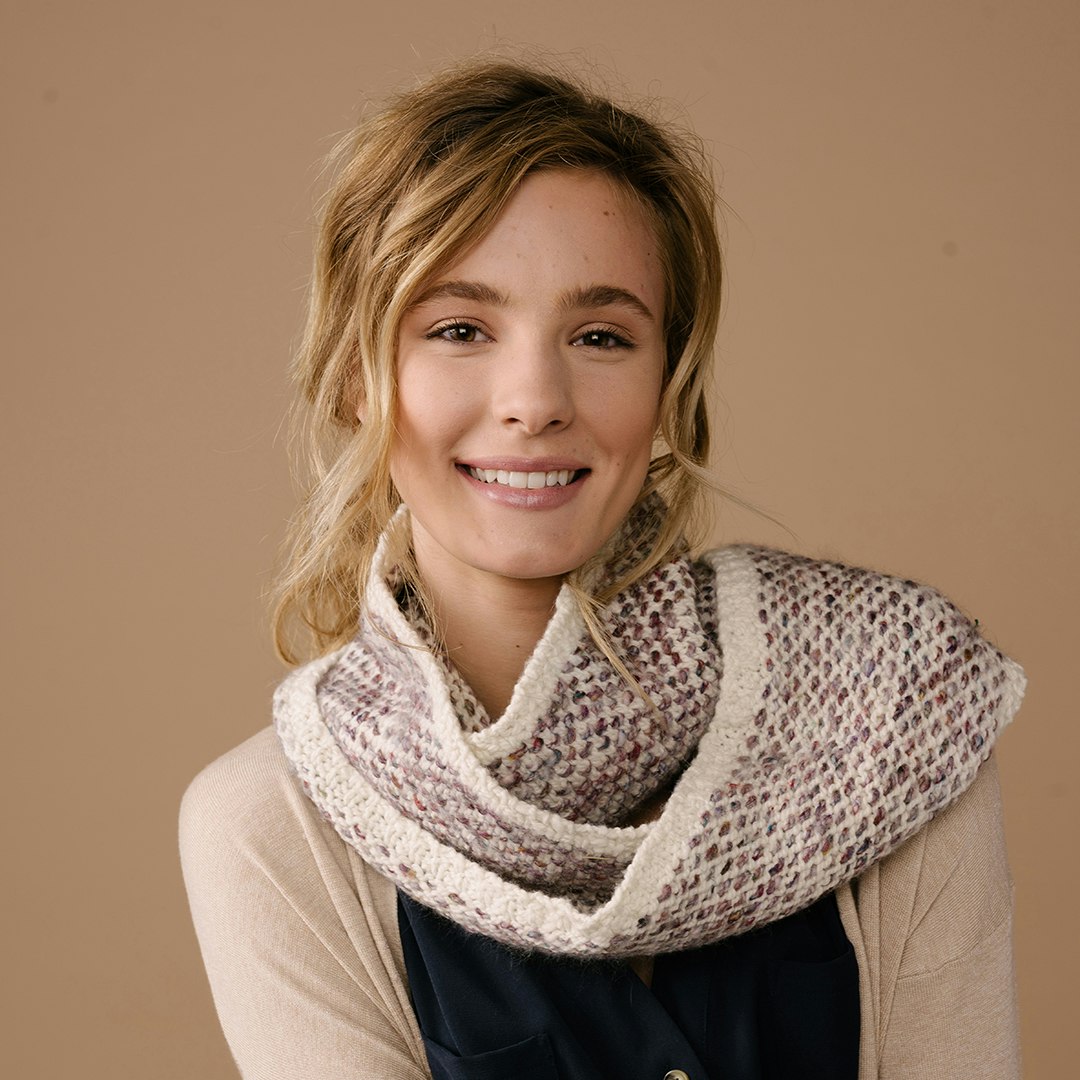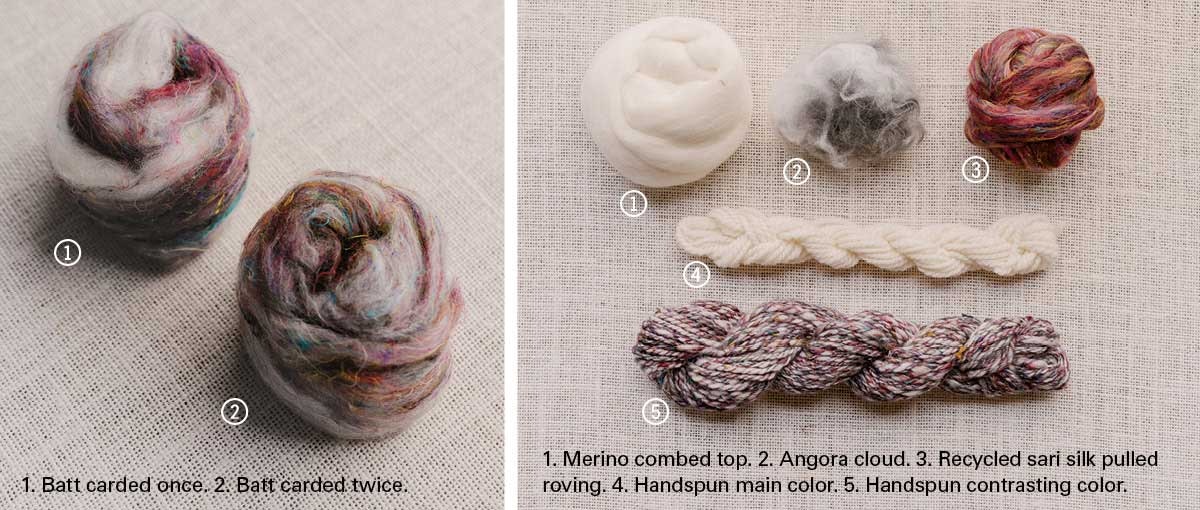Subscriber Exclusive
Project: Rainbow Fish Infinity Scarf
Inspired by a popular children’s book, Stefanie set out to create her own shimmering, colorful cowl using one of her favorite spinning tools—a recently acquired drumcarder.
Inspired by a popular children’s book, Stefanie set out to create her own shimmering, colorful cowl using one of her favorite spinning tools—a recently acquired drumcarder. <a href="https://spinoffmagazine.com/project-rainbow-fish-infinity-scarf/">Continue reading.</a>
https://spinoffmagazine.com/cdn-cgi/image/format=auto/https://www.datocms-assets.com/75073/1656683131-rainbow-fish-infinity-scarf-1.jpg?auto=format&w=900
The Rainbow Fish, by Swiss author and artist Marcus Pfister, is a story about a beautiful fish that learns to make friends by sharing his colorful scales. Inspired by this popular children’s book, I set out to create my own shimmering, colorful cowl using one of my favorite spinning tools—a recently acquired drumcarder.
For this project, I used my drumcarder to blend recycled sari silk and Merino with angora collected from my own rabbits. The result was soft, iridescent handspun yarn with flecks of all the colors of the rainbow, highlighted in an infinity scarf designed to be wrapped twice around the neck. When woven loosely through the knitting, the colorful yarn curves slightly, resembling fish scales. I paired it with a natural-colored smooth wool for contrast and to let the handspun yarn shine. Both sides of the scarf are equally beautiful, so it can be worn showing either or both sides of the work. This pattern would also work well featuring art yarn or thick-and-thin yarn that can be hard to match with a knitting pattern.

The scarf wraps around twice for extra warmth.
SUBSCRIBER EXCLUSIVE
The Rainbow Fish, by Swiss author and artist Marcus Pfister, is a story about a beautiful fish that learns to make friends by sharing his colorful scales. Inspired by this popular children’s book, I set out to create my own shimmering, colorful cowl using one of my favorite spinning tools—a recently acquired drumcarder.
For this project, I used my drumcarder to blend recycled sari silk and Merino with angora collected from my own rabbits. The result was soft, iridescent handspun yarn with flecks of all the colors of the rainbow, highlighted in an infinity scarf designed to be wrapped twice around the neck. When woven loosely through the knitting, the colorful yarn curves slightly, resembling fish scales. I paired it with a natural-colored smooth wool for contrast and to let the handspun yarn shine. Both sides of the scarf are equally beautiful, so it can be worn showing either or both sides of the work. This pattern would also work well featuring art yarn or thick-and-thin yarn that can be hard to match with a knitting pattern.

The scarf wraps around twice for extra warmth.
[PAYWALL]
Preparation Notes
After sampling and swatching, the fiber blend I settled on for the shimmering scales (contrasting color) was 50% undyed Merino top, 25% silver angora cloud, and 25% sari silk pulled roving. Using my drumcarder, I blended four batts, each consisting of 0.21 ounces recycled sari silk, 0.21 ounces angora, and 0.42 ounces Merino.
I began by feeding predrafted wool top onto the carder, followed that with the angora cloud, and added predrafted sari silk roving last to help hold the angora in place, because it has a tendency to float away. I removed the batt from the drumcarder, split it in half lengthwise, teased the halves wider, and fed each half onto the carder one at a time with the wool side down. This was the effect I wanted for shimmering scales: the fibers were intermingled but not so blended that they were muddy.
Spinning Notes
I split the batt into 2-inch-wide strips of fiber and gently predrafted to prepare for spinning. I spun the strips using a short forward draw with twist in the web to create a semiwoolen yarn on my Schacht Ladybug with Scotch tension. For the Z-spun singles, I used a ratio of 8:1, then switched to 6.5:1 for plying S from a center-pull ball. I spun the main color yarn with a short forward draw using the same ratios and twist direction.
I finished both yarns with separate 10-minute soaks in hot water, then 5-minute soaks in cold water before snapping and hanging them to dry. The sari silk released some dye into the hot water bath. I strongly advise washing the main color and contrast color yarns separately before knitting. After the cowl is knitted, wash gently in cold water prior to blocking to prevent color bleed.

Materials
Fiber 7 oz Paradise Fibers Undyed Merino Top; 3/4 oz Silver Settlers Grove French Angora Cloud; 3/4 oz Paradise Fibers Recycled Sari Silk Multicolored Pulled Roving.
Yarn MC: 2-ply; 230 yd; 714 ypp; 9 wpi; worsted weight. CC: 2-ply; 65 yd; 628 ypp; 7.5 wpi; bulky weight.
Needles U.S. sizes 8 (5 mm) and 101/2 (6.5 mm):
47–60" circular (cir). Adjust needle size if necessary to obtain the correct gauge.
Notions Marker (m); tapestry needle.
Gauge 14 sts and 19 rnds = 4" in woven patt on larger needle.
Finished Size 64" circumference and 61/4" tall.
Notes
This scarf is worked in the round.
When weaving with the contrasting color, be consistent with which yarn is above and which is below for best results. If you switch, some woven stitches will be higher than others, and the spacing will be off between rows of woven stitches.
Spread the stitches out on the right needle to maintain even tension on the woven yarn.

Stefanie created a textured fabric by moving a contrasting color yarn back and forth from right side to wrong side while knitting the main color.
Scarf
With MC, larger needle, and using the Rib-Cable method, CO 224 sts.
Place marker (pm) and join in the rnd.
Rnd 1 *P1, k1; rep from * to end.
Rnds 2 and 3 *K1, p1; rep from * to end.
Rnd 4 Knit.
Join CC.
Rnd 5 *Bring CC to front, k1 with MC, bring CC to back, k1 with MC; rep from * to last 2 sts, bring CC to front, ssk with MC—223 sts rem.
Rnd 6 *Bring CC to back, k1 with MC, bring CC to front, k1 with MC; rep from * to last st, bring CC to back, k1 with MC.
Rnd 7 *Bring CC to front, k1 with MC, bring CC to back, k1 with MC; rep from * to last st, bring CC to front, k1 with MC.
Rep Rnds 6 and 7 ten more times, then work Rnd 6 once more. Break CC.
Rnd 29 With MC, *k1, p1; rep from * to last st, k1f&b—224 sts.
Rnd 30 *K1, p1; rep from * to end.
Change to smaller needle.
Rnd 31 *P1, k1; rep from * to end.
Using an extra-stretchy, no-flare method, BO all sts in patt. I used Lori’s Twisty Bind-Off as foll: P1, *rotate right needle clockwise (away from you) 360 degrees that brings working yarn to back, k1, pass purl st over knit st just made, rotate right needle counterclockwise (toward you) 360 degrees that brings working yarn to front, p1, pass knit st over purl st just made; rep from * to end.
Finishing
Weave in ends. Wet-block with cold water.
Resources
Rib-Cable Cast-On Method, youtu.be/6WQIm1H2hDM
Lori’s Twisty Bind-Off Method, youtu.be/31nfF5pG-8I
When she is not protecting the public as a health inspector, Stefanie Johnson enjoys creating unique items and teaching others to spin, knit, and weave. Along with her husband, Jason, and children, Samantha and Lincoln, she raises French Angora rabbits, honeybees, and chickens on the family’s hobby farm, Settlers Grove, in Illinois.




